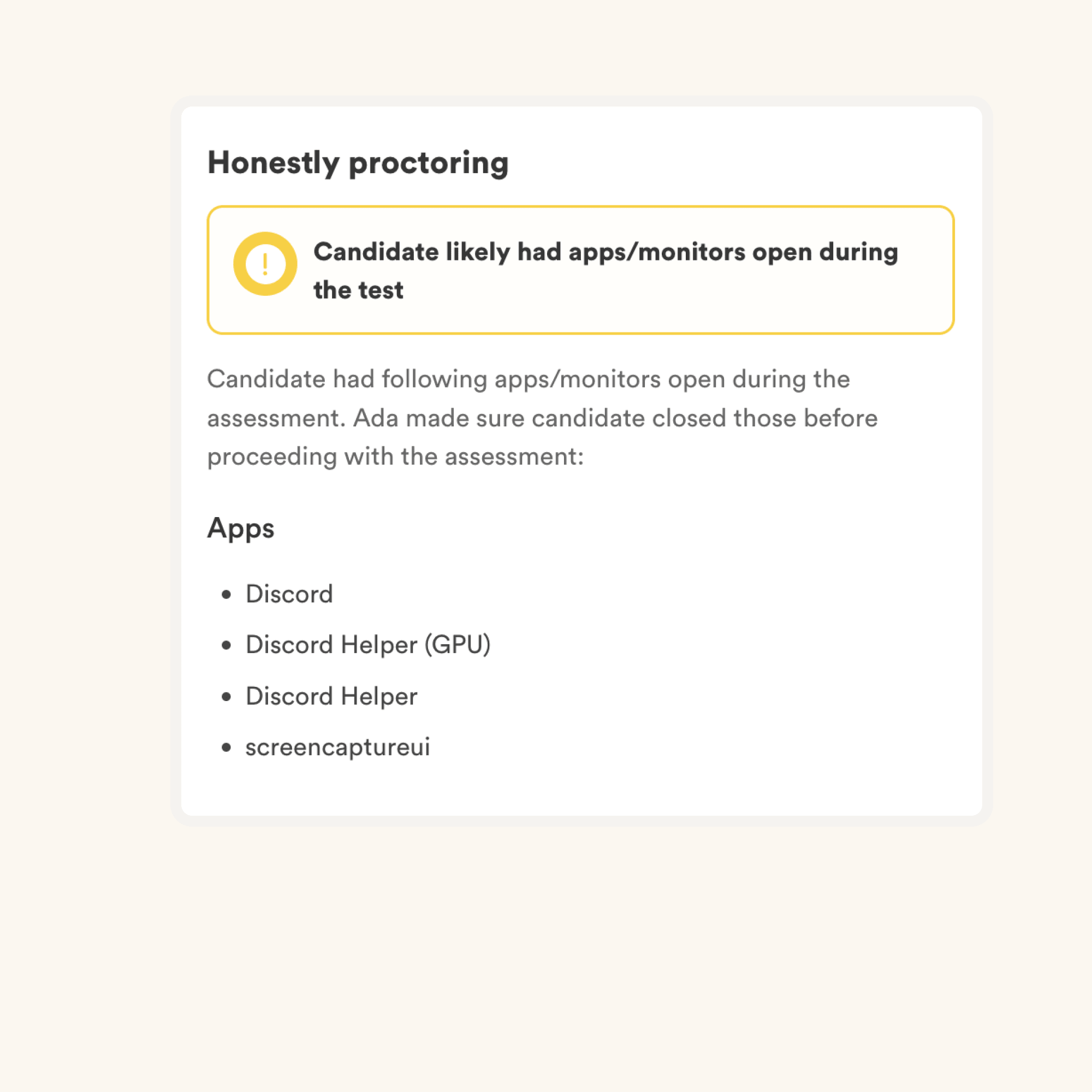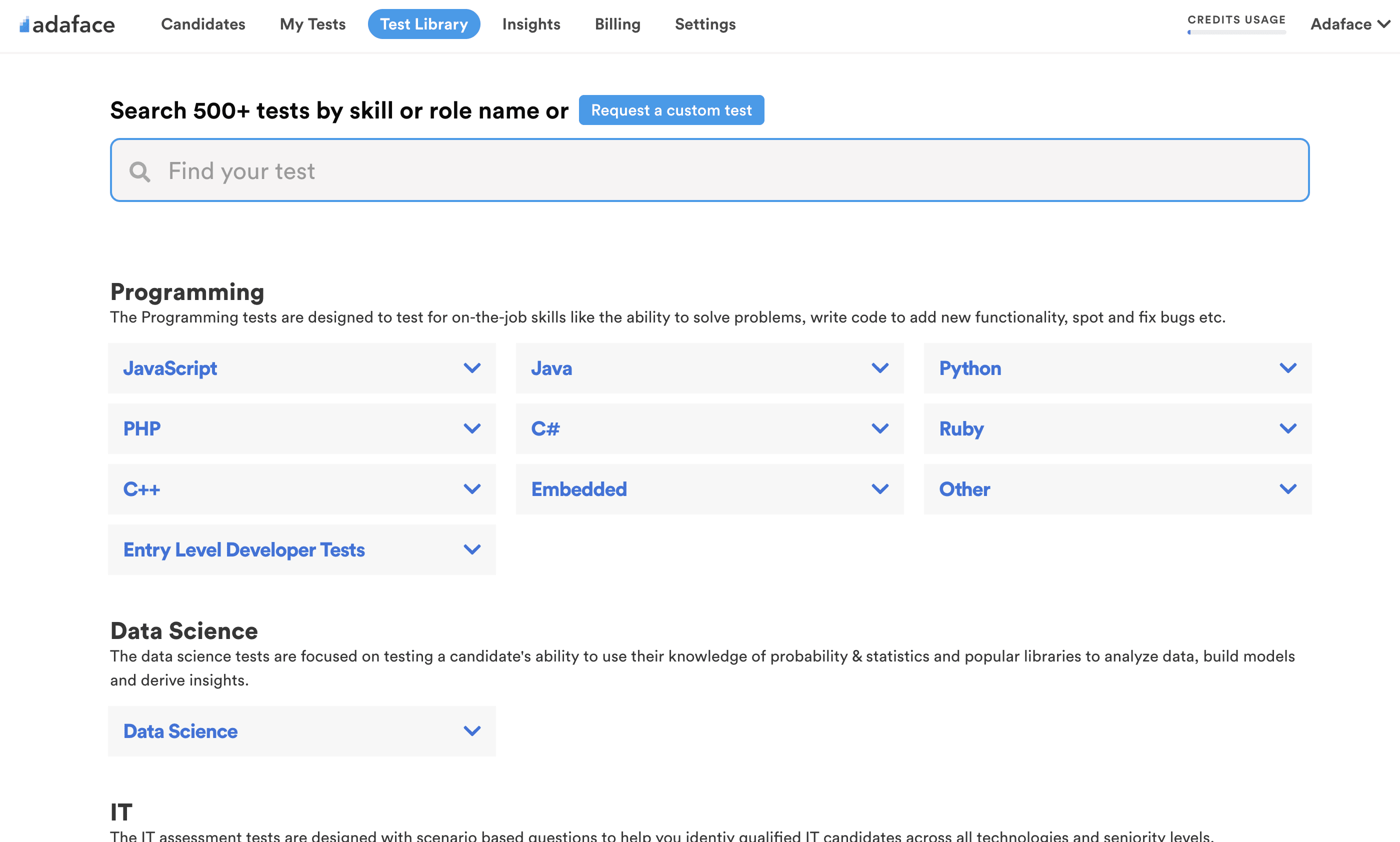Test Duration
~ 30 minsDifficulty Level
Moderate
Questions
- 5 Erlang MCQs
- 1 Erlang Coding Question
Availability
Available as custom testThe Erlang Data Structures Test evaluates a candidate's proficiency in using and manipulating Erlang's core data structures. It assesses knowledge of lists, tuples, maps, records, and advanced concepts like ETS tables through MCQs and coding questions. The test covers pattern matching, recursion, list comprehensions, and efficient data handling in concurrent and distributed systems, crucial for building robust Erlang applications.
Covered skills:
Test Duration
~ 30 minsDifficulty Level
Moderate
Questions
Availability
Available as custom testThe Erlang (Coding): Data Structures Test helps recruiters and hiring managers identify qualified candidates from a pool of resumes, and helps in taking objective hiring decisions. It reduces the administrative overhead of interviewing too many candidates and saves time by filtering out unqualified candidates at the first step of the hiring process.
The test screens for the following skills that hiring managers look for in candidates:
Use Adaface tests trusted by recruitment teams globally. Adaface skill assessments measure on-the-job skills of candidates, providing employers with an accurate tool for screening potential hires.
We have a very high focus on the quality of questions that test for on-the-job skills. Every question is non-googleable and we have a very high bar for the level of subject matter experts we onboard to create these questions. We have crawlers to check if any of the questions are leaked online. If/ when a question gets leaked, we get an alert. We change the question for you & let you know.
How we design questionsThese are just a small sample from our library of 15,000+ questions. The actual questions on this Erlang (Coding): Data Structures Test will be non-googleable.
With Adaface, we were able to optimise our initial screening process by upwards of 75%, freeing up precious time for both hiring managers and our talent acquisition team alike!
Brandon Lee, Head of People, Love, Bonito
It's very easy to share assessments with candidates and for candidates to use. We get good feedback from candidates about completing the tests. Adaface are very responsive and friendly to deal with.
Kirsty Wood, Human Resources, WillyWeather
We were able to close 106 positions in a record time of 45 days! Adaface enables us to conduct aptitude and psychometric assessments seamlessly. My hiring managers have never been happier with the quality of candidates shortlisted.
Amit Kataria, CHRO, Hanu
We evaluated several of their competitors and found Adaface to be the most compelling. Great library of questions that are designed to test for fit rather than memorization of algorithms.
Swayam Narain, CTO, Affable
The Adaface test library features 500+ tests to enable you to test candidates on all popular skills- everything from programming languages, software frameworks, devops, logical reasoning, abstract reasoning, critical thinking, fluid intelligence, content marketing, talent acquisition, customer service, accounting, product management, sales and more.
The Erlang (Coding): Data Structures Test is designed to assess a candidate's knowledge and skills in working with various data structures in Erlang. It is used by recruiters to find the best candidates for roles requiring strong proficiency in Erlang programming.
Yes, recruiters can request a custom test that includes questions from both the Erlang (Coding): Data Structures Test and the Python (Coding): Data Structures Test. This allows you to assess candidates' proficiency in multiple programming languages in one test.
This test covers various skills such as Lists, Tuples, Maps, Records, Binary Data, ETS Tables, Pattern Matching, List Comprehensions, Recursion, Higher-Order Functions, and Distributed Data Structures. It also includes MCQs and coding questions designed to assess these skills.
We recommend using this test as a pre-screening tool early in the recruitment process. You can add a link to the assessment in your job post or directly invite candidates by email. This helps in identifying the most skilled candidates quickly.
Yes, you can test both Erlang and Python skills together. This approach is recommended for roles requiring proficiency in multiple programming languages. Check out our Erlang (Coding): Data Structures Test and Python (Coding): Data Structures Test for more details.
In addition to the Erlang (Coding): Data Structures Test, we offer other relevant tests such as the Erlang Online Test and the Erlang (Coding): Debugging Test.
Yes, absolutely. Custom assessments are set up based on your job description, and will include questions on all must-have skills you specify. Here's a quick guide on how you can request a custom test.
We have the following anti-cheating features in place:
Read more about the proctoring features.
The primary thing to keep in mind is that an assessment is an elimination tool, not a selection tool. A skills assessment is optimized to help you eliminate candidates who are not technically qualified for the role, it is not optimized to help you find the best candidate for the role. So the ideal way to use an assessment is to decide a threshold score (typically 55%, we help you benchmark) and invite all candidates who score above the threshold for the next rounds of interview.
Each Adaface assessment is customized to your job description/ ideal candidate persona (our subject matter experts will pick the right questions for your assessment from our library of 10000+ questions). This assessment can be customized for any experience level.
Yes, it makes it much easier for you to compare candidates. Options for MCQ questions and the order of questions are randomized. We have anti-cheating/ proctoring features in place. In our enterprise plan, we also have the option to create multiple versions of the same assessment with questions of similar difficulty levels.
No. Unfortunately, we do not support practice tests at the moment. However, you can use our sample questions for practice.
You can check out our pricing plans.
Yes, you can sign up for free and preview this test.
Here is a quick guide on how to request a custom assessment on Adaface.












